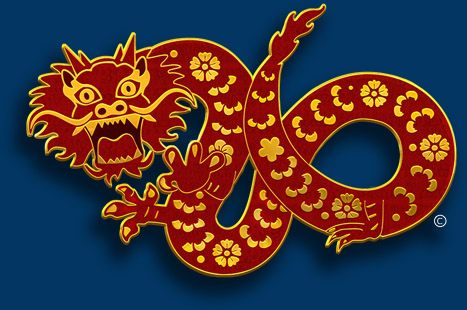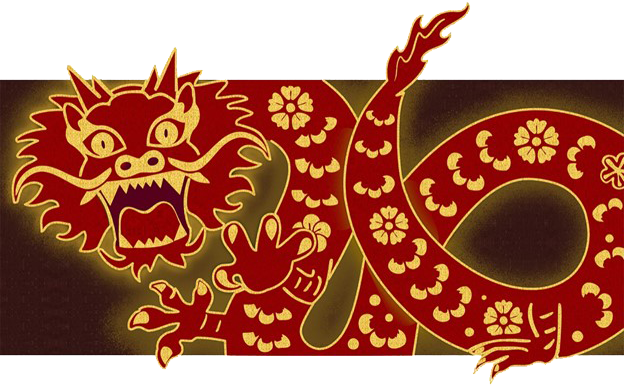Yin, Yang Mind: Esoteric Thoughts On Kata
By Jeff Brooks
One of the chief theoretical foundations of Chinese martial arts, including Okinawan karate, is Taoism. And one of the fundamental principles of Taoism is the view that phenomena exist by encompassing yin and yang aspects. Yin and yang are relative terms. Yin relatively yielding and dark; yang relatively hard and light.
Kata and in fact all movement in the martial arts is frequently subject to analysis in terms of its yin and yang aspects. Because extreme hardness cracks and extreme weakness crumbles we need to balance the two polarities in order to make our movement – and self-defense ability – skillful.
Most frequently the analysis of kata according to yin and yang is presented in terms of the parts of the move: the hit is yang, the pause and release phase of the move is yin. Sometimes people say the "block" is yin and the strike is yang, or the cover/deflection aspect of each move is yin and the expression of the power of the move is yang. But there are two other important ways to analyze kata in terms of yin and yang.
One is in terms of the architecture of the body: in direct down-light the hollows of the body that are in shadow are generally identified as yin, and so as effective target areas. The brightly lit parts of the body are yang or strong structures.
In high-noon type down light the eyes are in shadow, as is the area behind the ear lobes, under the nose, the back of the neck, the armpits, the groin, the back of the knees, etc. All are yin. All are susceptible to cavity-type strikes.
Another way to analyze a kata spatially, in terms of yin and yang, is by looking at the embusen — the line of movement of the kata or, as Victor Smith aptly terms it the "shape" of the kata.
A third way of analyzing the kata in terms of yin and yang is in the dynamics of each moment. Here is how I presented it to one of the groups of practitioners at our dojo: By way of introduction to the principle of understanding each dynamic moment in terms of its yin and yang aspects, we emphasized the principle of vigorously filling space. (This is something that we all have been doing since the day we began practice.) That is aggressively moving forward and, for example, punching.
We followed that emphasis with aggressively emptying space. In that case we emphasized moving as if our center, for example, were under attack. To avoid the incoming contact we suddenly shift, vacating the space we were in, and relocating our body adjacent to but not in the way of the incoming attack. Displacing the body, in this manner is a way of deliberately and aggressively emptying space.
Once everyone understood and could skillfully do both of these, we put the emphases together, laminating these yin and yang aspects in one move. That is in the case where we pivot out of the way of an incoming technique but not yielding so much as to lose the still-point at the axis of our turn. By pivoting on the spot not only do we vacate an area but we fill one, simultaneously, with the other half of our body – utilizing one flow of energy, a single move, to accomplish aggressive emptying and aggressive filling of space.
That way you can not be there for the incoming attack, the aggressor finds that his energy has been uselessly expended, and he finds himself next to you. You still have the necessary root and power to send ki (energy) into the opponent, uprooting, grappling or striking him. (This speed and control do require a mastery of the use of koshi, the greater hip area that includes the area from the upper thigh up to and including the hip and lower abdomen, to initiate the motion of your body.)
This is analysis of yin and yang in kata in three dimensions. The three dimensions, as described above, are space, time and mind. In space we analyze on the basis of yin and yang parts of the body – locating targets, kyushos and weapons. In time we analyze by dividing the moves of the kata into pieces and finding their relative emitting and replenishing or yielding qualities. We analyze kata in terms of the dimension of mind when we look at our ability to fill and empty space simultaneously. In this analysis (and in this action) we extend our understanding of our body's function and capacity physically, manifesting it by applying our analytical mind and will to our body, in each moment of the kata's performance.
In some Asian teaching traditions, time, space and mind are the three dimensions of phenomenal reality. So it makes sense that we ought be able to analyze kata effectively in terms of these three.
It can be that time and space are also mental constructs, and should be included in the category of "mind." After all we impose our ideas about the parts of a thing onto a thing. We would have one seamless reality unless we divided it according to our mentally constructed and subconsciously imposed categories. We can say we construct time too, from mind, because there really is nothing we can find or point to as time except our memory and our imagination that construe continuity from the flow of our perceptions, and organize it as "time."
Without mind imputing a continuity to the flow of perceptions there would only be now. But still, given the limitations of our understanding, given what the Indian Buddhist sage Nagarjuna called "farmer's mind" — a farmers practical reliance on function as a provisional test for truth — we can stick with analysis of ki in kata on the basis of these three dimensions of phenomenal reality.
In my earlier years of training, a few decades ago, we students were asked to repeat back rote answers to questions on our rank tests. The black belts sitting on a bench as our judges would as us some question, and like recruits in boot camp we would shout back the answer. They used to ask us stock questions, and one of them was "How much of karate is mental?" And we would answer "90 per cent, Sensei!" And I thought: What did someone once mean by that question, and that answer? We were never told. Did someone once mean by this insight that the karate practitioner's character, determination, vision, emotions and so on determined their success or failure in martial arts? Maybe. Did they mean that through our mental functions and through our actions (our karma) originating in our mind, that we fabricate the entire reality in which we live?
Someone somewhere long ago may have meant just that. I hope so. I hope the history of martial arts is that rich and that profound. I know the present is.

Jeffrey M. Brooks
Jeff Brooks (9th dan), began martial arts training in 1978 and opened his first karate dojo in Northampton, MA (1988 through 2009), while also conducting self-defense seminars, professional programs in combative skills and served as a regular contributor on Zen and karate-related topics to FightingArts.com.
Jeff then moved to South Carolina and started a career in law enforcement, serving as a police officer, then detective, defensive tactics instructor, firearms instructor, PPCT instructor, Deputy US Marshal, and Deputy Sheriff. After retirement, he founded Mountain Karate in Saluda, NC.
In karate Brooks received his 5th degree Black Belt from the Nagamine honbu dojo, his 7th degree black belt in 2004, and his 9th degree black belt in 2022, in recognition of his formation and leadership of Yamabayashi Ryu. He studied with leading teachers in Okinawan, Japanese, and Chinese traditions, in the US and overseas, including Katsuhiko Shinzato (the translator of Shoshin Nagamine's Essence of Okinawan Karate Do, and formerly a student of the Kishaba brothers' karate and kobudo); Sogen Sakiyama, Roshi (direct student of Miyagi Chojun, and practitioner of Goju-ryu karate); and Shoshin Nagamine (Chief of the Motobu District Police, Mayor of Naha, and founder of Matsubayashi Shorin Ryu).
Jeff Brooks has written hundreds of published articles on martial arts, and Zen and has been cited widely online and in print. He wrote speeches and presentations for high profile public figures in politics, media, business and the arts.
He is author of several books including "True Karate Dō", available on Amazon.com
Search for more articles by this author:






